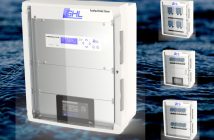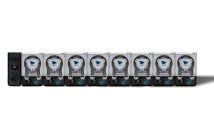A short time back we started a new series of articles called “Giving the Hobby a Bad Name”. We are continuing on with that series, but renaming it slightly to “Bad for the Aquarium Hobby”, as we feel this will better encompass issues that show up with fish stores, aquarium products, or techniques. The focus of this installment is miracle cure chemicals and additives.
Aquarium chemicals and additives are touchy subjects, as they can be quite tricky to master and everyone has an opinion on them, myself included. Many hobbyists feel that you should never dose what you cannot test for, with others thinking frequent water changes should alleviate any need for dosing. While both of these are sound and good advice, they play to the old school form of reef keeping. Quality test kits haven’t always been available and hobbyists haven’t always understood how different chemicals act in our closed systems. So, out of fear of unforeseen reactions and regurgitating advice they found to make sense, these hobbyists often shy away from wonder chemicals and the new popular additives. However, not every hobbyist shares this approach. Many fall for the cool new additive that either doesn’t do what it is marketed to do or has greatly exaggerated abilities.
Unfortunately, several “miracle additives” exist on the aquarium equipment market. They make fantastic claims and lure in the unsuspecting hobbyist. Making matters worse, the results of these additives are often not directly measurable. For example, how does the average hobbyist measure things such as amino acids or the amount/type of bacteria you are adding to your system? Sure, you could measure the effects of bacteria by testing for things like ammonia, but who’s to say the additives you are dosing are true to what is stated on the bottle?
The main additive that provoked this soap box talk is the Instant Ocean BIO-Spira. I’m not here to claim that this product is ineffective or shouldn’t be purchased. However, I am here to question a phrase written on the front of the bottle. Just under the company’s name, there is the statement “Makes Marine Aquariums Fish-Safe Instantly”. This statement is very dangerous, especially for new saltwater hobbyists who are not familiar with the nitrogen cycle or the effects of ammonia or nitrite on aquarium livestock. Additionally, many newly converted hobbyists that come from the freshwater realm might assume that adding fish the same day (a very bad habit of casual freshwater aquarists) is perfectly fine. Regardless of the claims, there is no possible way that BIO-Spira can reduce the cycle time of a newly established aquarium from several weeks to instantaneous. This is especially true if the aquarium has newly imported live rock. Can BIO-Spira effectively speed up the cycle time of a new aquarium? Probably, but it certainly cannot make a new marine tank instantly fish-safe. Instead, belief in this product’s ability to do just that may actually lead to massive amounts of fish death.
The main point I’m trying to get at with this article is to question fantastic claims from aquarium equipment, techniques, or additives. Don’t outright assume the company putting out the product is lying, but understand that what you read on a label or on an aquarium forum may not be wholly accurate at the time. Saltwater aquariums require patience, plain and simple. Don’t fall for miracle cures for fish diseases or additives that turn you cyano-ridden tank into Tank of the Month material overnight.







Pingback: Acrylic Tank Manufacturing Unveils Their Miracle Additives | AquaNerd()